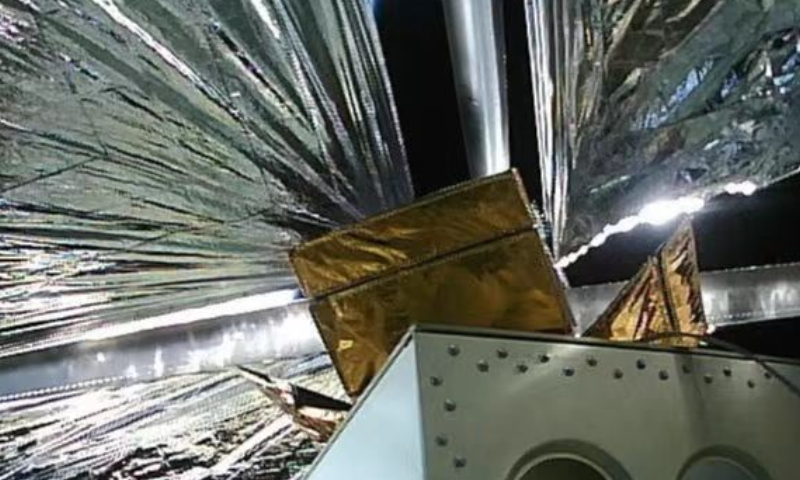China has made new strides forward in managing space junk, as it has successfully unfolded a 25-square-meter deorbiting sail in-orbit for the payload capsule of a recently launched rocket. This marked the first time in the world a deorbiting sail system has been deployed in such a way, the Global Times learned from the system developers on Tuesday.
The deorbiting sail device, developed by Institute 805 of the Shanghai Academy of Spacecraft Technology (SAST) is designed to enable dysfunctional spacecraft to leave orbit sooner in order to help control the spread of space debris and junk. The sail was installed on the payload capsule of the Long March-2D Y64 carrier rocket that was launched into space on June 23 and the system was successfully unfolded in orbit on June 26, according to the SAST.
The sail system stretches to 25 square meters, according to the SAST developers, and can enable a 300-kilogram payload capsule to re-enter Earth’s atmosphere within two years, so as to release precious orbital resources.
The size of the deorbiting sail also set a record, the developers revealed.

The sail is made of extra-thin materials and its thickness is less than one tenth of the diameter of a hair. Such light, highly extendable textiles mean that the sail system can be installed onboard any mature spacecraft, according to the SAST.
The SAST explained to the Global Times that the deorbiting sail system is like a gigantic kite in space that can help slow down spacecraft once deployed.
The thin sail uses aerodynamic resistance formed by the thin atmosphere of the low-orbit environment to slowly decelerate the satellite and gradually leave the original orbit, the SAST said, explaining the working principles of the system.
Taking a small satellite with an orbit altitude of 750 kilometers and a weight of 15 kilograms as an example, it can continue to operate in orbit for 120 years and even longer after the end of its service life if no deorbiting measures are taken. The use of the 2.25-square-meter deorbiting sail can reduce the deorbiting time of satellites to less than 10 years.
China tested a similar passive deorbiting 2.25-square-meter deorbiting sail system codenamed Taurus for the first time in September 2019.
Space junk poses a threat to in-orbit spacecraft. The most typical case is the crash between the US’ “Iridium 33” and the scrapped “Cosmos-2251” of the Soviet Union at a height of nearly 800 kilometers above Siberia.
The crash not only knocked out Iridium 33 but also produced a large amount of debris, which was scattered across more than a thousand kilometers in space, having a big impact on subsequent space programs.
Unfolding the deorbiting sail in space Photo: SAST




